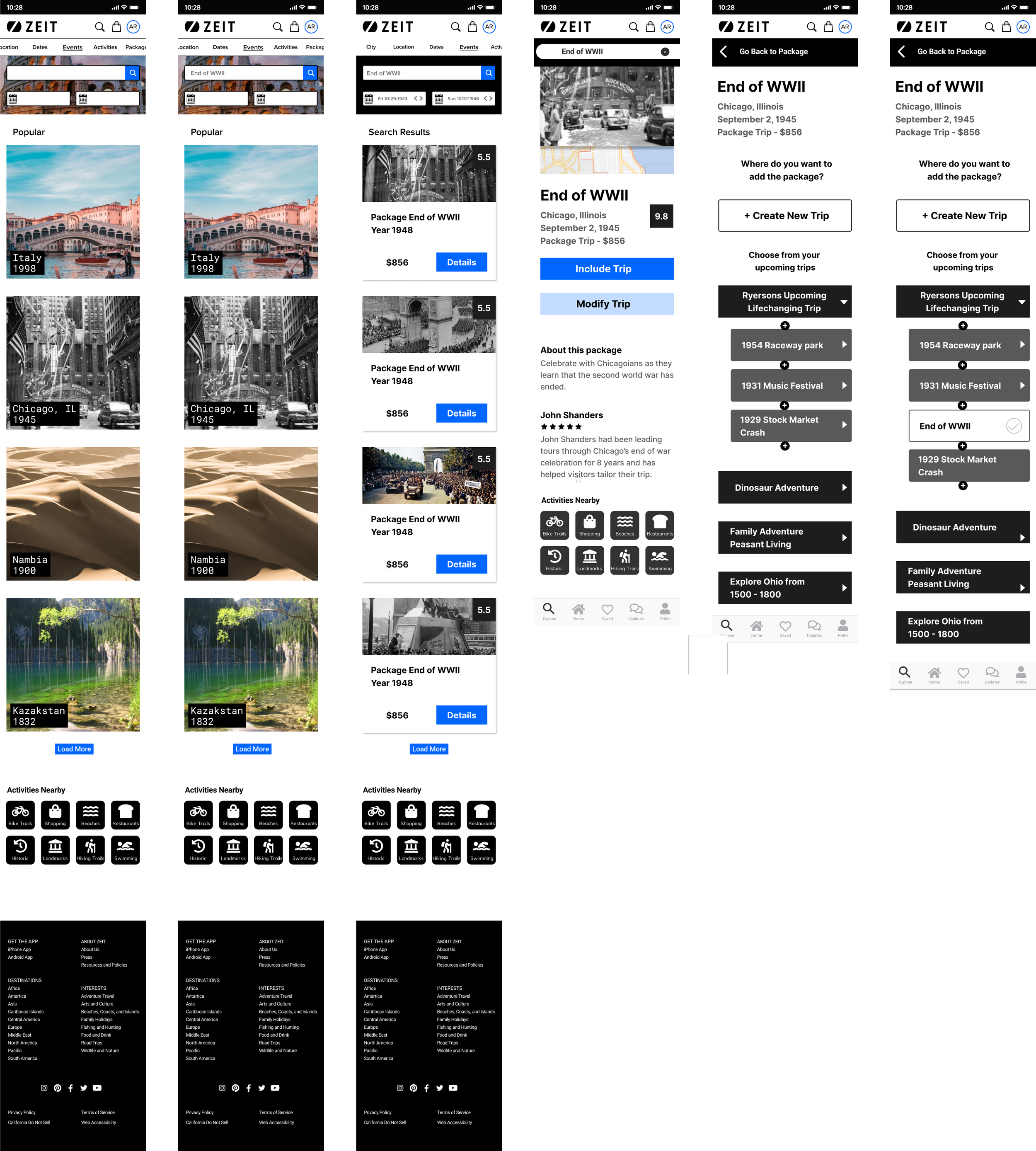Zeit Case Study
COMPANY
Zeit: a travel company
CLIENT
Time Travel Division
MY ROLE
I was the Lead UX Designer throughout the project cycle to determine the feasibility and the interaction of time travel options for travel with a focus of creating the interaction for adding multiple packages into one trip. As the end-to-end designer, this project required Wireframing, Prototyping, User Research, Logo and Icon design.
Introduction
Overview
Zeit is a travel company that helps travelers find unique travel opportunities.
Challenges
Time travel is looking to uncover opportunities for a time travel booking website. Zeit is looking for insight on how users would use time travel in while booking trips.
Role
Role: UX Designer
Timeline: 4 months part time
Platform: web and Mobile app
Team: Michael Douglas
Approaches
User survey
User Interviews
Card Sorting
Website Usability Tests
Results
User research uncovered some insights on how users would use time travel while planning their travel and focused on how users would build multi-step trips that incorporate time travel.
Research
Competitive Research, User Interviews, Card sorting, and Affinity Mapping were used to define the problem and audience. Initial user interviews were conducted in person while later interviews were done remotely online. The research led to the creation of primary persona and a specific task flow that helped inform the overall user flow. This research was used in the creation of the wireframes and UI of the website’s web and mobile version.
Define
An iterative approach was taken to defining the project. Research came in at different times and changes were needed to accommodate the new information. The research lead to the Sitemap layout and the Task Flow and User Flows.
Design
Design of Zeit was informed by the research. After initial wireframing was completed, creating the brand style tile helped refine Zeit’s design and overall feel. The style tile was the compass that informed many design decisions.
Test
Iterations of the wireframe were tested and eventually used in conducting research. A Figma prototype was created that allowed users to test the website with a task flow set up from the Provisional Persona: Zeit Prototype
This testing lead to expanding optional pathways that users could filter down time travel packages.
Conclusion
Building a prototype based on research lead to some observations for Zeit on how users would use time travel in their research. This research was narrowing down how users would hypothetically use time travel in travel. The most challenging aspect was testing something that is nebulous, thus making it hard to rely on the results.
The next steps to improve this project would be to expand the wireframe and open more pathways in the prototype to use in further research.













